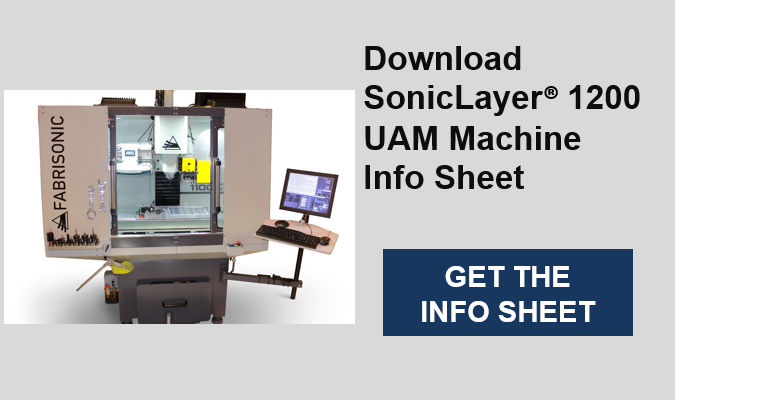The New SonicLayer 1200 – Smaller Footprint and Great Price!

In-space manufacturing has gained attention with the advent of 3D printing that allows generic feedstock to be molded into seemingly any shape imaginable. By stocking a few key feedstocks, 3D printing can be used in far reaching places to create repair parts or even generate new structures. With unique safety, weight, and power considerations, printing with metal in space has many challenges. Recently, Fabrisonic worked on a NASA SBIR PH II program to scale down Ultrasonic Additive Manufacturing (UAM) for possible use on the International Space Station (ISS). UAM is a solid-state 3D printing process–meaning there is no melting during printing and the formation temperatures are low. This means that UAM avoids many of the safety concerns found with powder based printing processes.
The output of the first year of research is a small scale UAM system that retains all the great features of their larger counterparts:
- Low Temperature Welding – Ultrasonic welding happens near room temperature with no changes in microstructure or metal temper
- Common Feedstocks – UAM systems utilize commercially available metal foils
- Hybrid Approach – As with all Fabrisonic systems, the SonicLayer 1200 has both an additive stage and a subtractive stage meaning all surfaces, internal and external, have CNC quality surface finish and accuracy.
- Dissimilar Metals – The solid-state nature of UAM allows all Fabrisonic systems to weld dissimilar metals within a single part without adverse metallurgical reactions.
- Embedding Electronics – The hybrid approach coupled with the low-temperature welding allows SonicLayer systems the ability to embed electronics or sensors anywhere in solid metal parts
For years, Fabrisonic customers have asked for a smaller UAM machine that could be purchased with less capital cost. At RAPID 2019, Fabrisonic released the new SonicLayer 1200 with a list under $200k. The new smaller system has a work envelope of 10”x12” and runs off of industry standard G-code. The SonicLayer 1200 is ideal for research and development labs in industry and academia.



